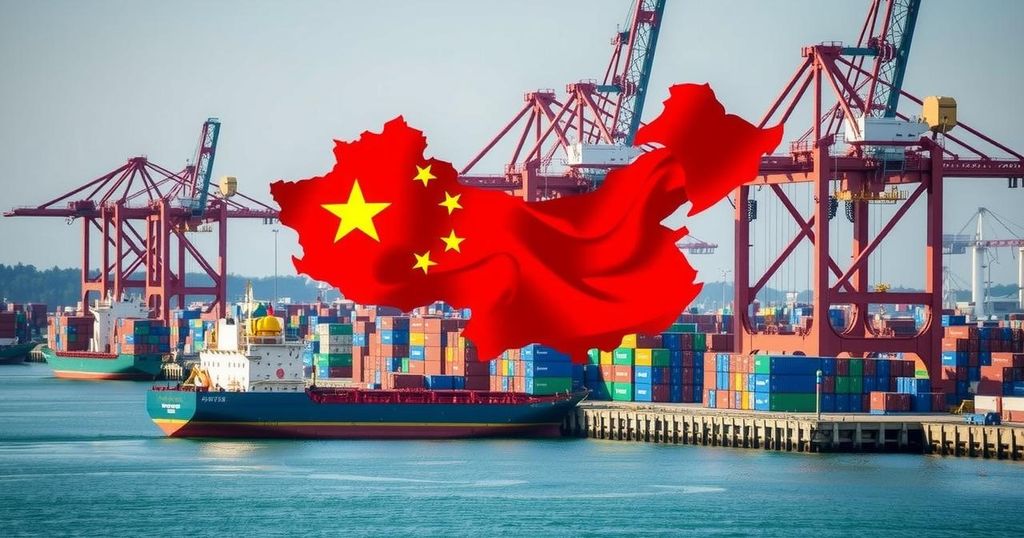China’s exports reached record levels in 2024, rising 10.7% year-on-year despite looming tariffs proposed by President-elect Trump. As imports unexpectedly increased by 1%, the data reflects a resilient export sector preparing for higher tariffs. Analysts warn that significant tariffs could adversely affect China’s GDP growth, emphasizing the need for continuing economic adjustments amid current challenges.
In 2024, China’s exports reached an unprecedented high, as reported by state media, showing a year-on-year increase of 10.7 percent, surpassing economists’ predictions. This surge in exports is particularly opportune as President-elect Donald Trump prepares to implement tariffs with the potential to hinder economic growth. Furthermore, contrary to expectations, imports saw a modest rise of 1 percent, marking the strongest performance since July 2024. These figures arrive at a crucial time as Trump returns to the White House with a populist economic agenda aiming to impose significant tariffs on Chinese goods, which economists predict would inflate costs for American consumers and reduce profit margins for Chinese exporters. Analysts at UBS have posited that a 60 percent tariff on Chinese imports could diminish China’s GDP growth by approximately 2.5 percentage points within the subsequent year. Nonetheless, economic conditions remain favorable in the short term as companies increase shipments to circumvent impending tariff impacts. Zichun Huang, a China economist at Capital Economics, emphasized that “outbound shipments are likely to stay resilient in the near-term, supported by further gains in the global market share thanks to a weak real effective exchange rate.” In an effort to bolster economic stability, Beijing has unveiled aggressive measures to stimulate growth, including policy rate reductions and relaxed property purchase limitations. As the country grapples with its most sluggish growth in decades, attributed to ongoing challenges such as a real estate crisis, lackluster consumer confidence, and a diminishing population, the forthcoming GDP figures for both the fourth quarter and the entire year of 2024 are highly anticipated. Notably, the World Bank has recently upgraded China’s growth forecast for 2024 to 4.9 percent, from the prior estimate of 4.8 percent, reflecting a cautiously optimistic outlook for the world’s second-largest economy.
China’s export dynamics are pivotal not only for its own economy but also for global trade patterns, particularly as they relate to U.S.-China relations. The impending arrival of President-elect Donald Trump, with promises of stringent tariffs, raises significant concerns about potential economic repercussions. A historical context is important here, as tariffs can profoundly influence pricing, supply chains, and overall economic health within both nations. The broader economic landscape has shifted over recent years, with China grappling with a slower growth rate amid various structural challenges, requiring strategic measures to ensure continued economic resilience. With the anticipated release of GDP figures, stakeholders are keenly observing these developments to assess future trajectories.
In summary, China’s remarkable export growth illustrates a robust response to potential economic threats from impending tariffs under President-elect Trump’s administration. While the current export landscape appears favorable with proactive measures being taken by Chinese firms, the longer-term implications of elevated tariffs pose substantial risks to both U.S. consumers and China’s economic health. Furthermore, the upcoming GDP release will provide crucial insights into the broader economic climate as China navigates a complex array of challenges.
Original Source: www.aljazeera.com







